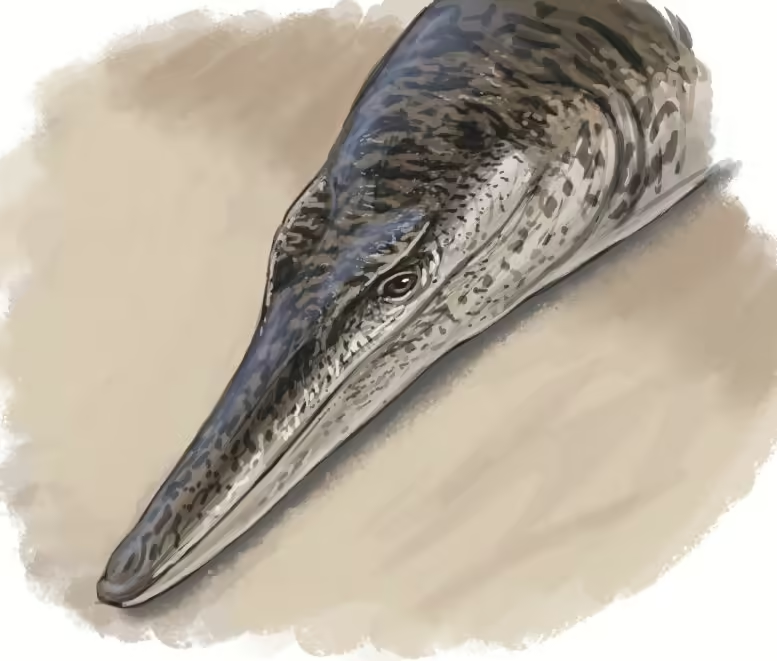A new species of marine crocodile that lived 135 million years ago has been described in Germany. A new species of the ancient marine crocodile Enalioetes schroederi has been described by an international team of scientists including researchers from Germany and the UK. The species lived in shallow seas that covered large parts of Germany during the Cretaceous period, around 135 million years ago.
This ancient crocodile belonged to the family Metriorhynchidae, a remarkable group that evolved a dolphin-like body structure. Metriorhynchids had smooth, scaleless skin, flippers, and a tail fin. They fed on a variety of prey, including fast-moving animals such as squid and fish, but some metriorhynchids had large serrated teeth, suggesting they fed on other marine reptiles. Metriorhynchids are best known from the Jurassic period, and fossils are rare in the Cretaceous period. Enalioetes schroederi is notable for its three-dimensional skull, making it the best-preserved Cretaceous metriorhynchid.
Advanced visualization reveals detailed anatomy
Project leader Sven Sachs from the Natural History Museum Bielefeld said: “This specimen is remarkable because it is one of the few metriorhynchids known to have a three-dimensionally preserved skull. This allowed us to perform a computer tomography of the specimen and we were able to learn a lot about the internal anatomy of these marine crocodiles. The excellent preservation allowed us to reconstruct the animal’s internal cavities and even its inner ears.”
Dr Mark Young, from the School of Earth Sciences at the University of Edinburgh, explains:Enaliotetes provides new insights into how metriorhynchids evolved during the Cretaceous. During the Jurassic, metriorhynchids developed a body plan radically different from other crocodilians: flippers, tail fins, loss of bony armor, and smooth skin without scales. These changes were an adaptation to an increasingly marine lifestyle. Enaliotetes shows us that this trend continued until the Cretaceous period because Enaliotetes They had larger eyes than even other metriorhynchids (which were already large by crocodile standards), and their bony inner ears were more compact than even other metriorhynchids; Enalioetes, was probably a faster swimmer”.
The perfectly preserved skull, along with the first cervical vertebrae, was found over a century ago by the German government architect D. Hapke in a quarry in Sachsenhagen, near Hanover. The specimen has an interesting history. It was given to Henry Schroeder of the Prussian Geological Survey in Berlin for preparation and study, where it is believed to have been included in the collection. This led to speculation that the specimen was lost during World War II. The specimen was later found in the Minden Museum in West Germany. It turned out that the specimen was returned to its finder, who brought it to Minden after World War II, where they found a new home, and took the specimen with them. As such, the crocodile is one of the most valuable specimens in Minden’s collection.
Henry Schroeder of the Berlin Geological Survey made the original description and the species was named in his honor.













